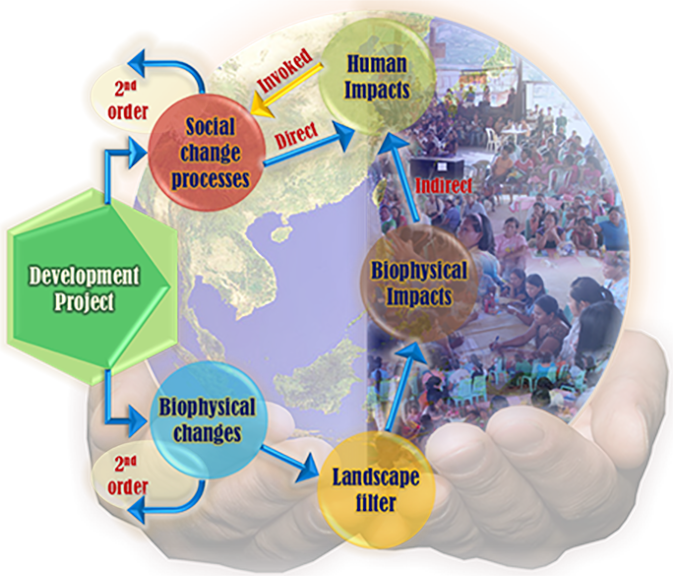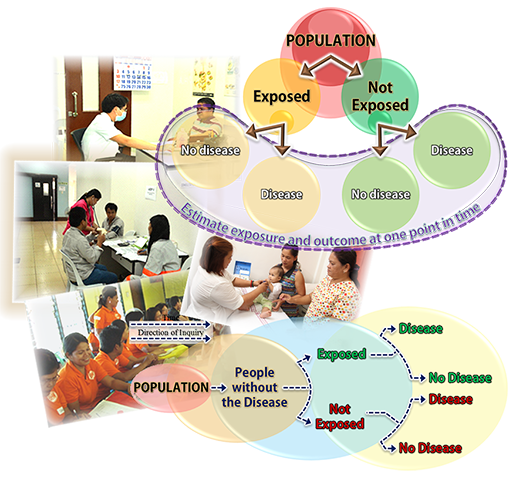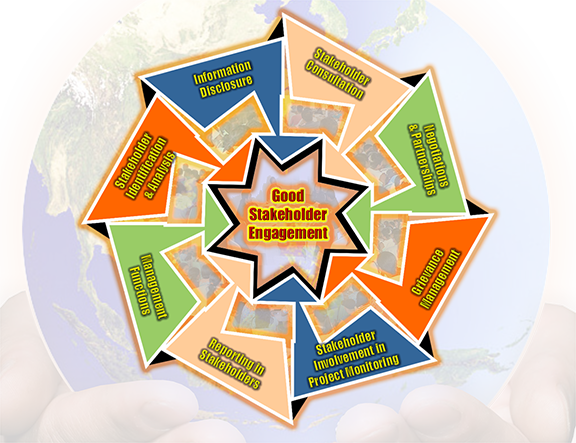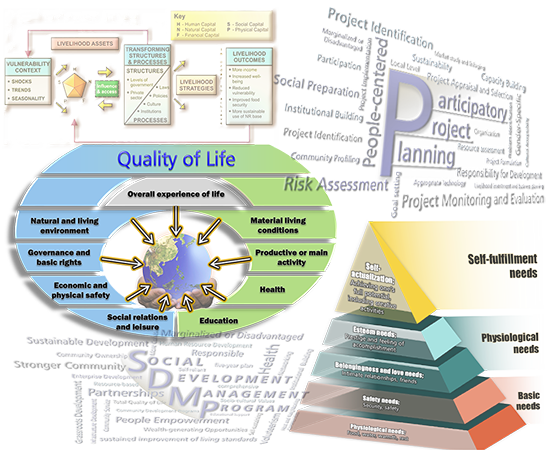Social Impact Assessment and Social Development

Social Impact Assessment
Social Impact Assessment (SIA) is analyzing, monitoring, and managing the intended and unintended social consequences, both positive and negative, of planned interventions (policies, programs, plans, projects) and any social change processes invoked by those interventions. Its primary purpose is to bring about a more sustainable and equitable biophysical and human environment (IAIA, 2003).
Social impacts are categorized into economic impacts and material well-being; quality of the living environment; health; culture; family and community; institutional, legal, political, and equity; and gender relations (van Schooten, Vanclay, and Slootweg, 2003).
BMP assesses the social impacts of interventions using two types of indicators. The first is the output indicator for the immediate interventions and results; the second is the outcome indicator for the real impacts and changes likely to happen later down the road. Our SIA may be ex ante or ex post. It is guided by, among others, the principles of sustainability, intra- and intergenerational equity, internalization of costs, protection and promotion of health and safety, multi-sectoral integration, and subsidiarity. We rely on key informant interviews, focus group discussions, and workshops involving community residents, people’s organizations, civil society organizations, and national and local government officials and secondary data generated by government and private sector offices.
Health Impact Assessment
BMP draws from its pool of experts in public health, epidemiology, and occupational medicine to conduct ex ante and ex post health impact assessment (HIA) for development projects.
Our HIA typically includes an assessment of the health baseline conditions at the impact communities, a review of the health hazards and effects of the project and assessment of the exposure risks of workers and residents to such hazards, design of a community and occupational health surveillance program, and formulation of a program to manage the health effects during project construction, operation, and decommissioning.
For the ex post HIA, BMP initially implements the health surveillance program on representative samples from a control group, impact communities, and project employees. The results are assessed and the health baseline conditions are updated. BMP then recommends improvements to the health surveillance and health management programs.
We support our HIA with a statistical sampling plan that recognizes the treatment groups with sample size based on significance level, statistical power, and effects size which are acceptable in epidemiological studies.


Stakeholder Engagement Program
The stakeholders of a development project include the affected communities, people’s organizations, local institutions, national and local government officials, religious groups, civil society organizations, and other interested or affected parties. They can influence the approval, conduct, and outcome of the project, either positively or negatively. Thus, they need to be engaged throughout the entire life of a project.
Given our rich experience in various settings, BMP can assist in the development, implementation, monitoring, and recalibration of the stakeholder engagement program (SEP). An SEP is crucial for large projects with wide ranging impacts on multiple stakeholder groups. We are guided by IFC’s eight building blocks of stakeholder engagement: stakeholder identification and analysis, information disclosure, stakeholder consultation, negotiation and partnerships, grievance management, stakeholder involvement in project monitoring, reporting to stakeholder, and management functions.
Social Development Programs
We formulate social development programs for those affected by planned projects. Our programs are geared toward improving the quality of life of the beneficiaries by providing them the required assets or capital, reducing their vulnerabilities, and putting in place the enabling structures and processes.
BMP employs the Sustainable Livelihoods framework of the United Kingdom Department for International Development. This is supported by a rigorous socio-economic profiling focused on the marginalized and disadvantaged and their needs, vulnerabilities, and resources and the potential markets and livelihoods; understanding the local development plans, budgets, organizations, and institutions and areas for collaboration and partnership; and the infusion of the key elements of sustainability into the program.
We back up our social development programs with a comprehensive data base of beneficiaries and a monitoring system that tracks down the indicators of quality of life. The European Union’s Total Quality of Life Model and Maslow’s Hierarchy of Needs are the sources of indicators.

